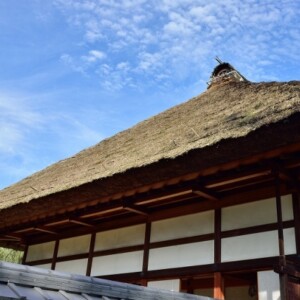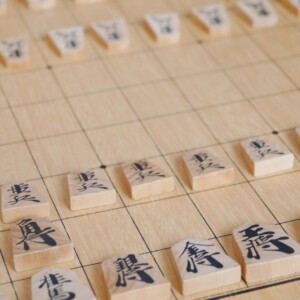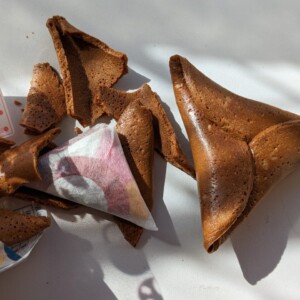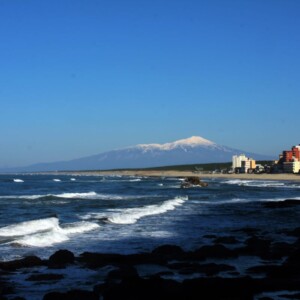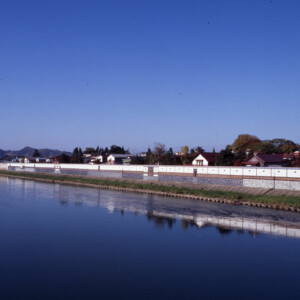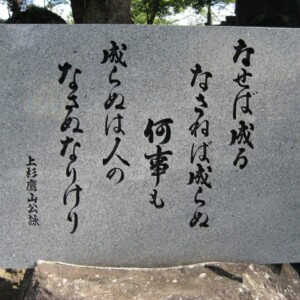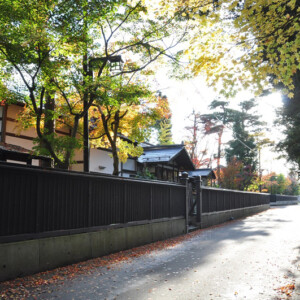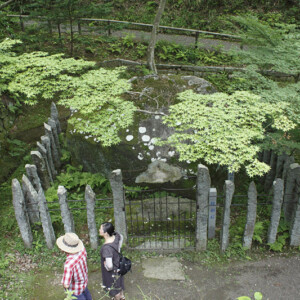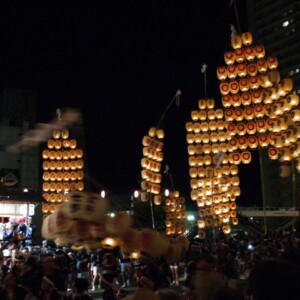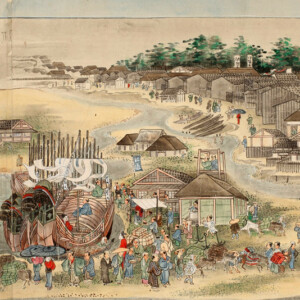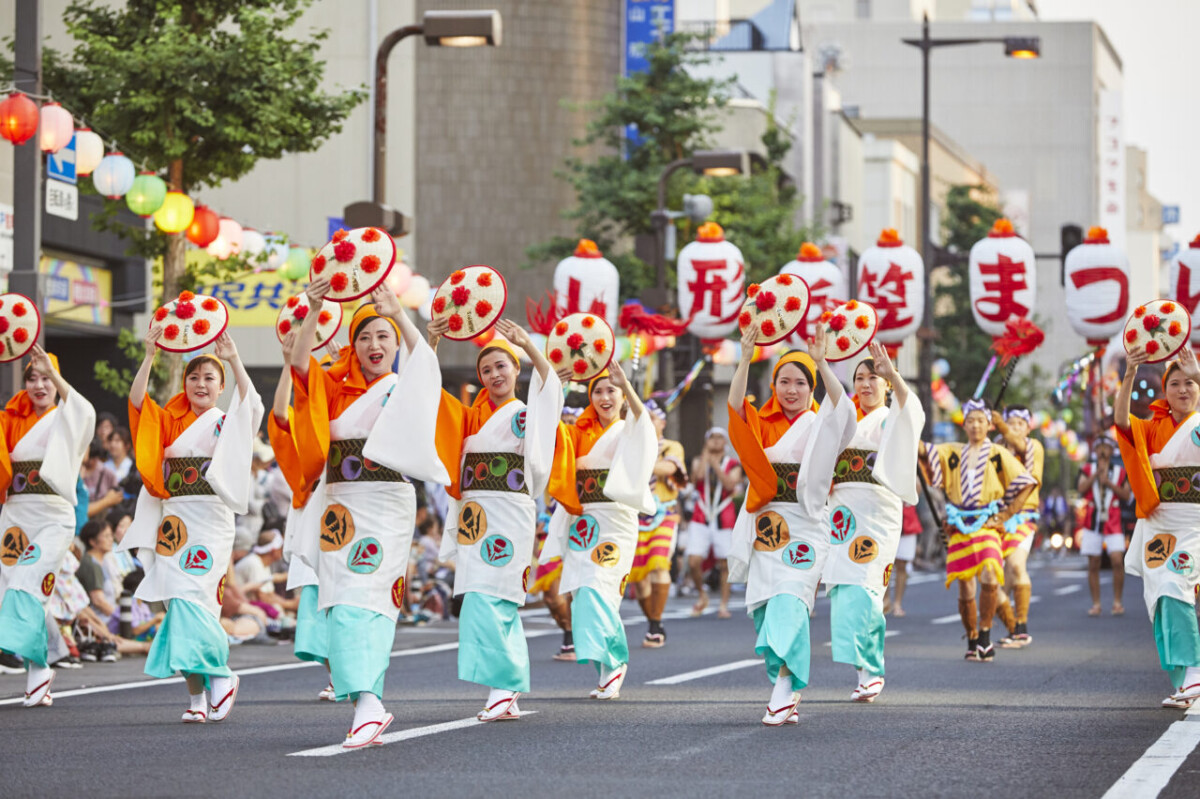
[Yamagata Prefecture] What is Hanagasa Ondo? Detailed introduction from overview to interesting episodes
Hanagasa Ondo, with its lively shakuhachi, shamisen, and taiko drum accompaniment and the memorable chant "Yasho, makasho," is a famous folk song performed at the Yamagata Hanagasa Festival, held every year from August 5th to 7th
In this article, we will explain in detail what Hanagasa Ondo is, as well as some interesting stories related to it
Reference: Yamagata Hanagasa Festival Official Website
Hanagasa Ondo?
Hanagasa Ondo is a folk song performed at the Hanagasa Festival, which is mainly held in Yamagata Prefecture. It originated around 1938 when folk song performer Arumi Toshu, who lived in Yamagata City, used the first half of the verse of the "Yagura Dotsuki Uta" song that his apprentice Ito Momoka had memorized, and Toshu came up with the second half, which his apprentice Horie Tanji performed with accompaniment
Hanagasa Ondo is often performed by women holding flower hats, and there were around 10 different choreographies depending on the region, but in 1999 a standard choreography incorporating relatively dynamic movements was established, and due to this characteristic, the number of male dancers is now increasing
Interesting stories about Hanagasa Ondo
Here are three interesting stories about Hanagasa Ondo
[ Hanagasa Ondo①] Michiya Mihashi's song becomes a million-seller
Michiya Mitsuhashi, a singer who produced 30 million-selling songs during the Showa era, had 12 folk songs that achieved million-selling success. Among them, did you know that Hanagasa Ondo was a huge hit, selling 2.7 million copies?
When listening to the recordings left behind by Mitsuhashi Michiya, it seems that he sings while cherishing the brightness and good tempo of Hanagasa Ondo, weaving in laughter that makes you imagine a smile in his voice
When you think of Michiya Mitsuhashi, many people may think of his singing voice singing "Ii Mon da na Kokyo wa," the commercial song for the snack brand "Carl," but Hanagasa Ondo is also a must-listen song
[ Hanagasa Ondo ②] Mukasari Ema at Wakamatsuji Temple
The "Wakamatsu-sama" that appears in the opening lyrics of the Hanagasa Ondo is said to refer to Suzutateyama Wakamatsu-ji Temple in Tendo City, Yamagata Prefecture
The temple enshrines Wakamatsu Kannon, the god of matchmaking, in keeping with the atmosphere of the lyrics of the Hanagasa Ondo song. Wakamatsu Temple is also famous for having 1,300 Mukasari votive plaques dedicated there, starting with the first one donated in 1898
There are several theories about the meaning of mukasari, including that it is a corrupted version of the words "welcome" and "leave," and that it means "a daughter who has married leaves," but in Yamagata Prefecture it is a dialect word meaning a wedding
For this reason, Mukasari ema are dedicated to children who died before marriage, depicting a posthumous marriage (ghost marriage), but it is considered taboo to use the name or portrait of a living person, as this person will be taken away by the dead
It could be said that this is a mysterious episode that contrasts with the bright atmosphere of the Hanagasa Ondo
Reference: Wakamatsuji Temple "Mukasari Ema"
[Interesting story about Hanagasa Ondo ③] It is danced to prevent the need for nursing care
Hanagasa Ondo is also danced as a form of exercise to prevent the need for nursing care
Koichi Babata, a music health instructor, has devised a nursing care exercise using the Hanagasa Ondo song to alleviate muscle weakness and lack of exercise
Care Home Canaan, a paid nursing home in Shinjo City, Yamagata Prefecture, is known for its emphasis on musical recreation, with Babata at the center of it all. A video of the nursing exercises using the Hanagasa Ondo song that were performed there has been viewed 13,000 times on YouTube
The sight of the residents wearing Hanagasa Ondo costumes and dancing with such joy is heartwarming
Reference: Care Home Canaan official website
summary
Hanagasa Ondo is a folk song that is performed at the Hanagasa Festival, which is mainly held in Yamagata Prefecture, but since the choreography was standardized in 1999, it has been discovered that it is now danced by a wide range of people, regardless of age or gender
If you visit Yamagata in the summer, be sure to take part in the Hanagasa Festival


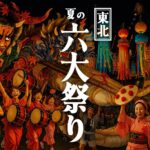
![[Yamagata Prefecture] The roots of Yamagata Hanagasa are in Obanazawa! “Yasshomakasho” is the chant of workers born from the embankment construction work. Yamagata Hanagasa Festival](https://jp.neft.asia/wp-content/uploads/2024/07/2594950_m-150x150.jpg)
![[Recommended Autumn Festivals: Akita Edition] 3 History and Traditional Akita Autumn Festivals Akita Catch](https://jp.neft.asia/wp-content/uploads/2024/08/979a38324ff45520e274bdc0cee6df5e-150x150.jpg)
![[Yamagata] Impressed by the bright flower hats! Let's go see the Yamagata Hanagasa Festival! img-thumb-PKST0I9A2549](https://jp.neft.asia/wp-content/uploads/2017/07/img-thumb-PKST0I9A2549-150x150.png)
!["Mogami safflower" certified as a Japanese heritage and Japanese agricultural heritage [Yamagata Prefecture] Mogami safflower](https://jp.neft.asia/wp-content/uploads/2022/12/30121446_m-1-150x150.jpg)
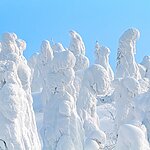
![[Tsuruoka City, Yamagata Prefecture] Tsuruoka's food culture has been passed down for hundreds of years 1470_Zenpoji Temple](https://jp.neft.asia/wp-content/uploads/2023/04/2d6b75e2500adfb8f7b8e6c68a2f7a03-150x150.jpg)
![[Yonezawa City, Yamagata Prefecture] Visit a hot spring connected to the Uesugi family of the Yonezawa Domain 1530_Onogawa Onsen Foot bath](https://jp.neft.asia/wp-content/uploads/2023/05/4ed5d5851f7d92ca3b0ebed3220d6418-150x150.jpg)
